How to make a rye sourdough starter
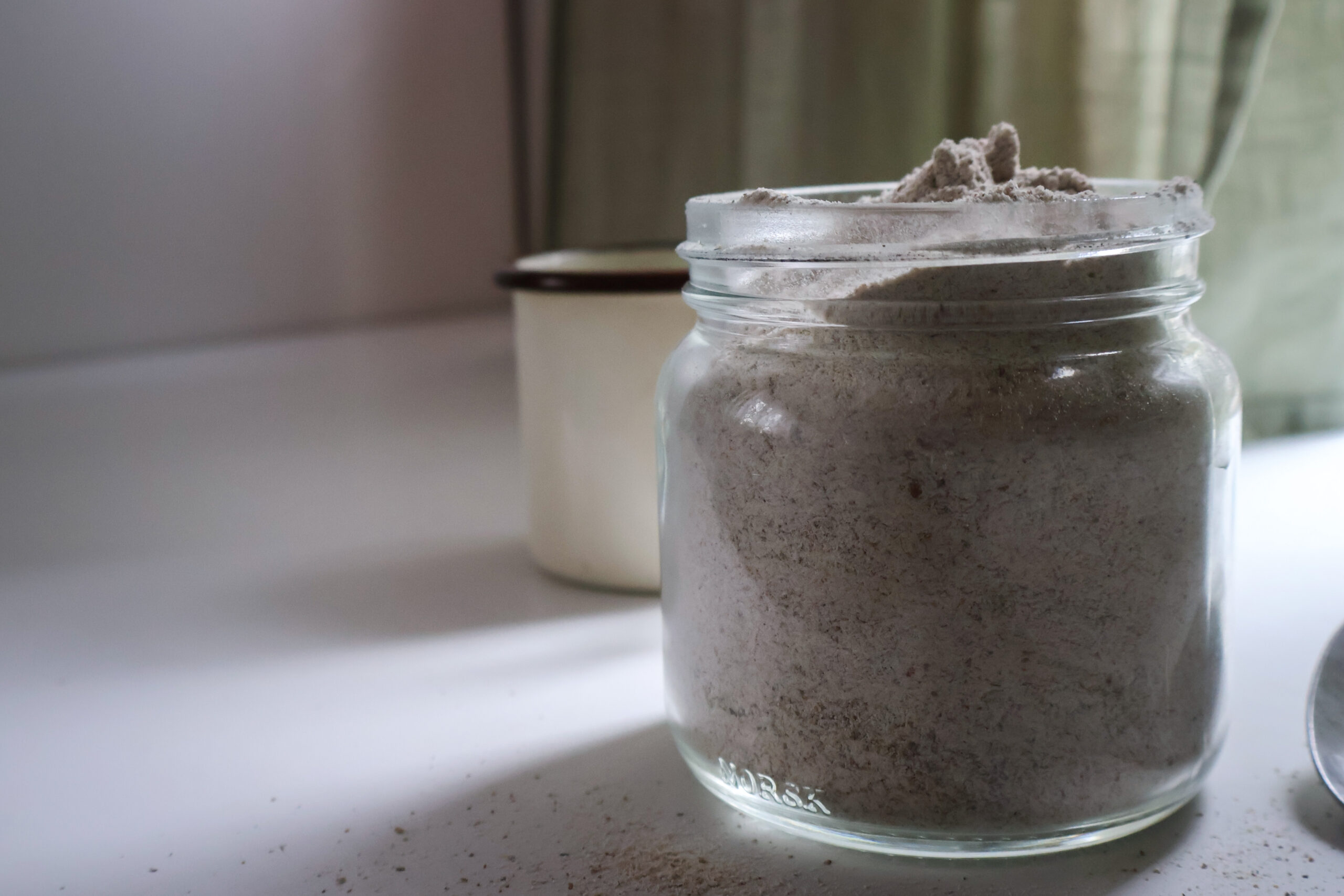
Learn how to make a rye sourdough starter in 5 days without throwing it away.
The reliable, beautifully bubbled rye starter will quickly become your partner in the kitchen! Whether you want to bake 100% whole wheat rye sourdough bread or use it for delicious wheat-rye breads, baking is simply a joy with this sourdough starter.
This method for making a rye sourdough starter is so easy! Faster than wheat flour and with more guaranteed results. So if you haven't come across a successful method for making sourdough, try this one!
To make a rye sourdough starter, you only need a few things and ingredients - a large jar, rye flour, water and of course something to mix it with. Then all you need to do is feed it consistently for a few days and by day five you can bake your own rye bread!
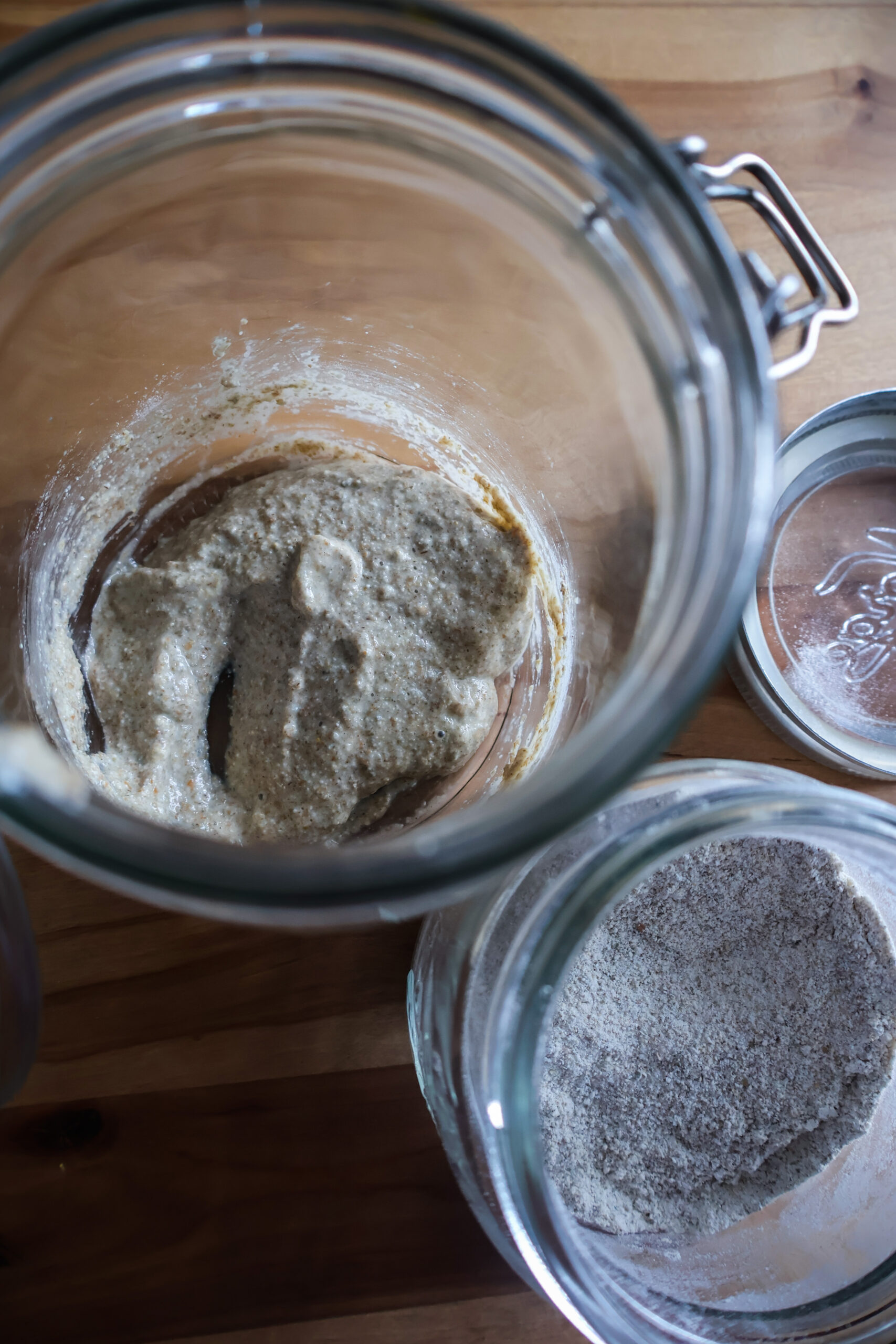
Rye sourdough starter is probably more traditional than wheat sourdough starter. I started out on rye sourdough starter too and slowly adapted to the methodI use now.
If you're interested in the benefits of fermenting and want to know why you should make your own sourdough starter, I recommend reading this article! You'll find everything you might want to know about this topic and a little bit of the theory behind it.
In this article, I will jump straight into how to make rye sourdough starter.
What flour to use to make rye sourdough starter?
For making your own rye sourdough starter you can use whatever rye flour you have available, but there are more and less suitable types.
- freshly ground rye flour - absolutely the best choice, with which I have the best results. Freshly milled grain has the greatest likelihood for fermentation because it better traps bacteria and yeast from the surrounding area.
- whole wheat rye flour - the second best choice. For this option, it is very important to use the freshest flour you can find. This is because ground flour releases the oils in the grain, which quickly go rancid.
- white rye bread flour - compared to the wholemeal option, bread flour has part of the germ and coating removed. The resulting bread is fluffier than with wholemeal flour. However, it is the least suitable for sourdough starter, as the germ and the bran are crucial for the sourdough starter.
Whatever rye flour you choose, make sure it is as fresh as possible. This is the only way to get the best and most reliable sourdough starter.
How to make a rye sourdough starter?
With my sourdough starter method, you can get about a liter of sourdough starter in 5 days, with absolutely no throwing away and no measuring! A liter of sourdough starter may still seem like too much for some, and if you're a beginner, you may not know what to do with it! That's why at the end of this article you'll find my tips for using up the resulting sourdough starter and, of course, instructions on how to continue feeding it and keeping it vital!
One more small but important note...
Five days is quite a long time, so don't just rely on your memory! I recommend keeping a piece of paper next to your sourdough starter and writing notes in it, especially the date of feeding and the amount of feeding. It seems trivial, but it is very helpful! Especially if your life is a little more busy! That's why I've added a cute little chart into my printable instructions and I hope it makes your sourdough starter making a lot easier! :))Five days is quite a long time, so don't just rely on your memory! I recommend keeping a piece of paper next to your sourdough starter and writing notes in it, especially the date of feeding and the amount of feeding. It seems trivial, but it is very helpful! Especially if your life is a little more busy! That's why I've added a cute little chart into my printable instructions and I hope it makes your sourdough starter making a lot easier! :))
You need to feed the sourdough starter every day and ideally at the same time of day (morning, afternoon or evening).
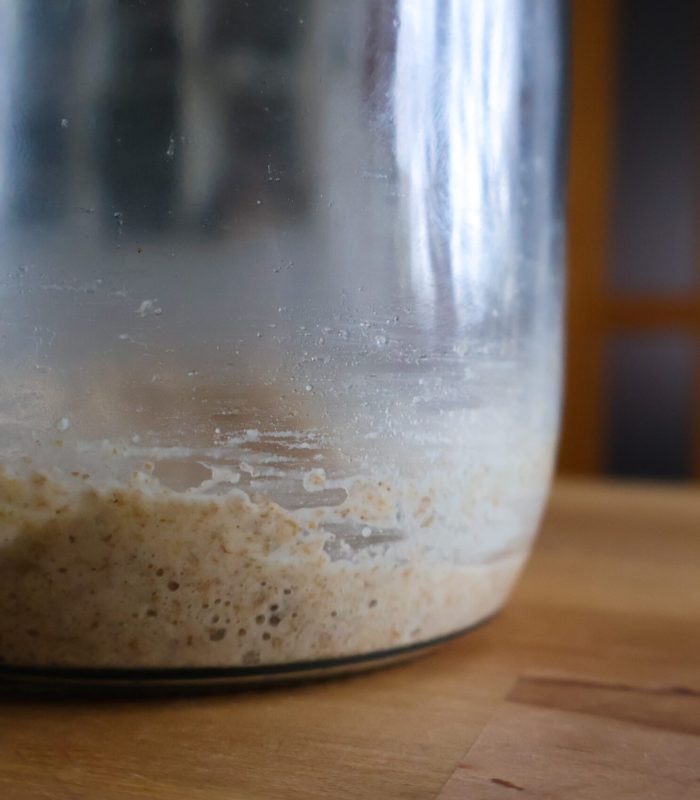
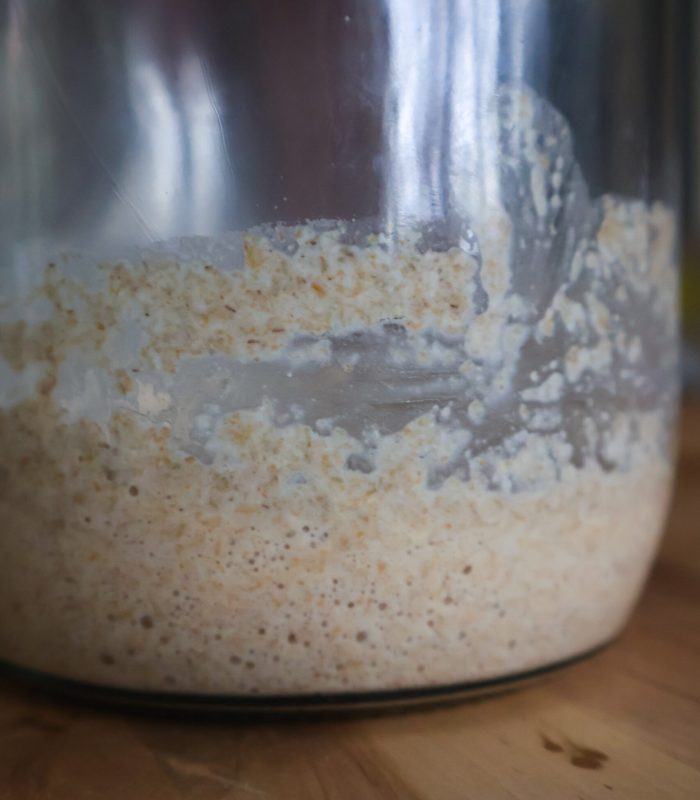
- day Prepare a large clean jar or container with a lid with a minimum capacity of 1.1 liters. Next, use a clean spoon and prepare enough flour for feeding. Place 1 tbsp of flour and 1 tbsp of water in the prepared jar.
If you have freshly ground flour, it is better to use heaped spoons, while if you have store-bought flour, it is better to use level spoons. At this stage, see how much your flour absorbs and add a little water or flour as needed to achieve a thick oatmeal-like consistency. - day - At this stage the sourdough starter is not yet fermenting and smells rather delicately, sweetly, a bit nutty - add 2 tbsp flour and 2 tbsp water. Now you know how much your flour absorbs water, so it will be easier for you to estimate the amount of water to achieve that porridge-like consistency again.
- day - There are now small bubbles visible in the sourdough starter, mainly on the side. There is a slight smell of wine. Add 4 tbsp of flour and 4 tbsp of water and stir again to a mushy consistency.
- day - the sourdough starter at this stage already has quite a lot of bubbles and you can smell more of red wine. This time add 8 tbsp flour and 8 tbsp water and mix.
- day - The bubbles are already large and already appearing on the surface. It smells sour (but still reminds me of red wine) and has a lot of bubbles on the surface. You can use the sourdough starter and just store it, or you can add an extra 16 tbsp of flour and 16 tbsp of water. It will seem like a lot at first, but there are a lot of bubbles in the sourdough and it will drop again after stirring. I ended up with about half a jar of starter after adding the flour.
You can also put a rubber band on the jar to check if your sourdough is really rising and bubbling. The starter is most active when it is about twice its volume.
- day - The sourdough starter is already bubbling and active, now it's time to bake something!
There are several advantages to making a larger quantity of sourdough starter like this:
- the starter is more stable,
- you'll have more of it,
- and you can bake a lot of bread at once,
- you can freeze your starter for a backup.
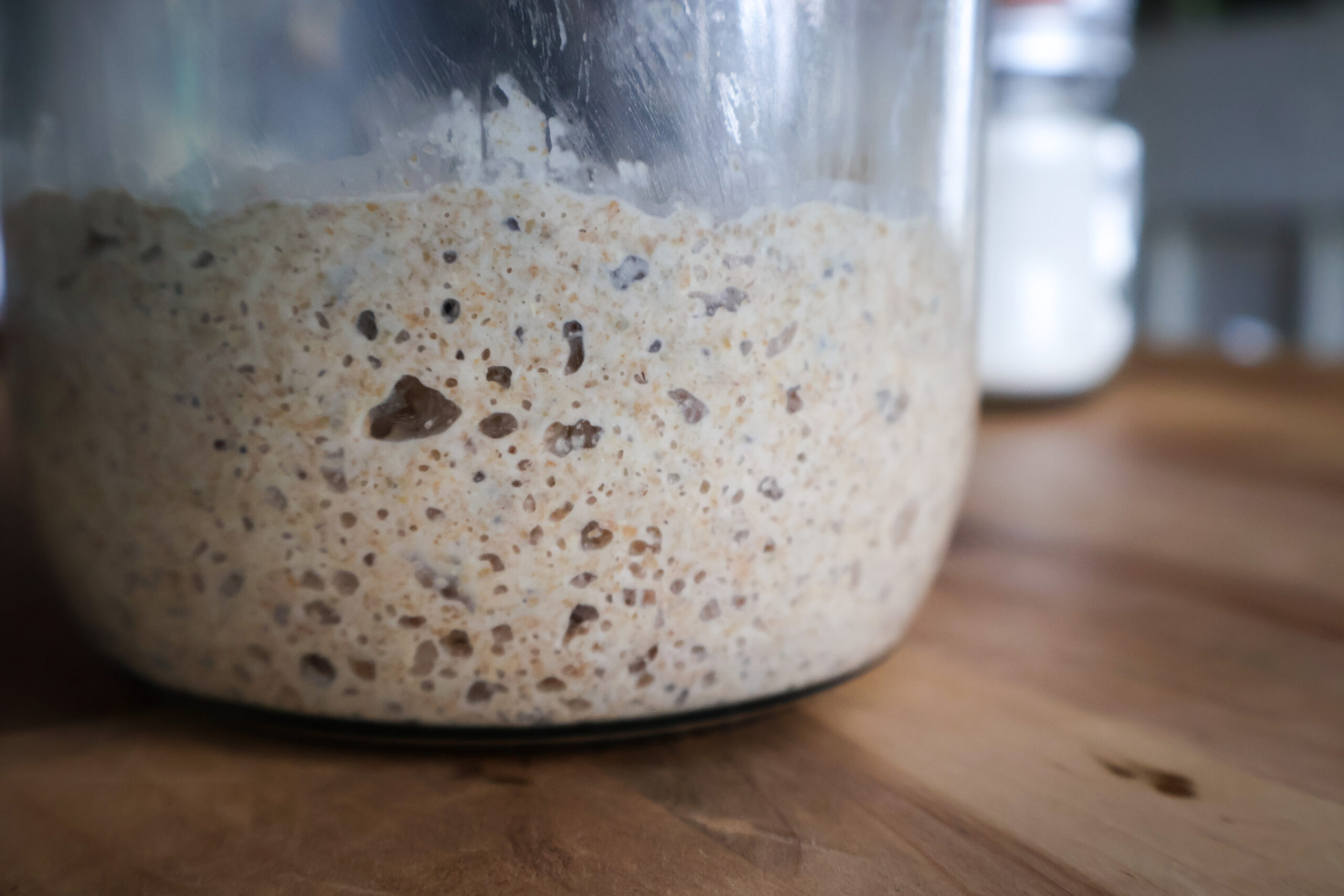
How to freeze rye sourdough starter for backup?
You never know what might happen to your sourdough starter, so it's best to make sure you have plenty of sourdough starter in stock. The method of freezing sourdough starter has worked well for me. Prepare a couple of small clean jars with lids, I recommend 2-3. Put 1 tablespoon of starter in each jar, seal tightly and put in the freezer.
To activate the starter after thawing, add 1 tbsp of flour and 1 tbsp of water to the jar, stir and let stand at room temperature. Repeat this the next day and the starter should be beautifully bubbly and active again.
What to bake with rye sourdough starter?
Now that you still have a full jar of active sourdough starter - even after taking a few spoonfuls to the freezer, it's time to bake. Active sourdough starter like this is basically a levain, only in large quantities. So use as many grams in your recipes as there would be of levain.
For example, I usually use a levain of 75 g flour + 75 g water + 25 g
sourdough starter - so I take approximately 175 g of the sourdough starter we have just created and use it
as a levain. i.e. I make bread dough straight away or use it according
to recipe.
What recipes can you bake with rye sourdough starter?
- 100% rye sourdough bread
- Sourdough gingerbread cake
- Sourdough tortillas with spelt flour
- Wheat and rye sourdough bread (no-knead and easy)
- Seeded bread - sourdough bread for beginners
- Rye levain sandwich sourdough bread
- Sunflower seed sourdough bread
- Sourdough lemon poppy seed cake
- Carrot shortcrust pastry rolls with plum filling
So I used this jar of sourdough starter to make a rye bread, which I then baked right away. I made the dough for wheat-rye bread, which I put in the fridge to rise for 24 hours. I also put the sourdough starter in the fridge, and after a few days, I used it to bake the easy sourdough gingerbread cake. I transferred the rest of the rye sourdough starter (about 2 tbsp) to a jar and kept it in the fridge for future use.
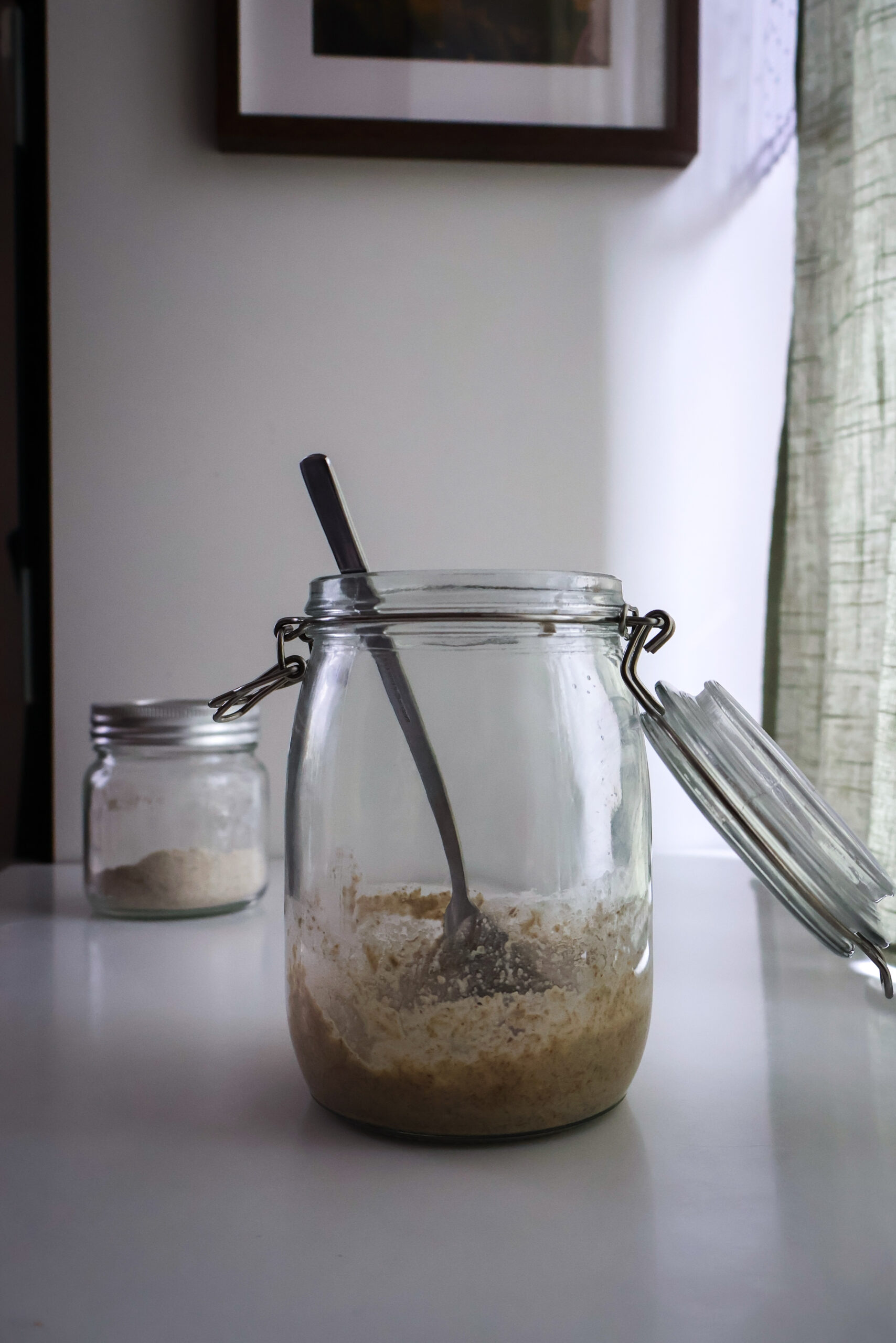
How to store and feed rye sourdough starter?
There are many ways to store rye sourdough starter. Unlike wheat sourdough starter, which I have been successful in storing in larger quantities, I prefer to store smaller quantities- of rye sourdough starter. It doesn't have as versatile a use as wheat starter, so I use it mainly for baking breads. Let me introduce you to the jar method.
This method means that you keep only 1 tbsp of starter and every time you want to bake bread, you make a levain..
How to make a levain?
If you want to bake bread, you have to make the levain the day before. I usually make the levain in the late evening so it ferments overnight. In a large bowl, just mix the required amount of flour and water and add the sourdough starter from the jar. I usually use 75 g of rye flour + 75 g of water + 1 tbsp of sourdough starter - that is, the entire content of the starter from the jar. Cover the bowl with a bag or a plate and let it ferment at room temperature.
In the morning the levain should be bubbly and should have increased in volume. You MUST now REMOVE 1 tbsp of the levain as a sourdough starter and put it back into the jar and continue to make the dough according to the recipe. You will then put the closed jar back in the fridge to await further baking.
With this method of keeping the rye sourdough starter, I recommend baking the bread at least once a week, otherwise you should feed it again with 1 tbsp of flour and 1 tbsp of water.
Recipe
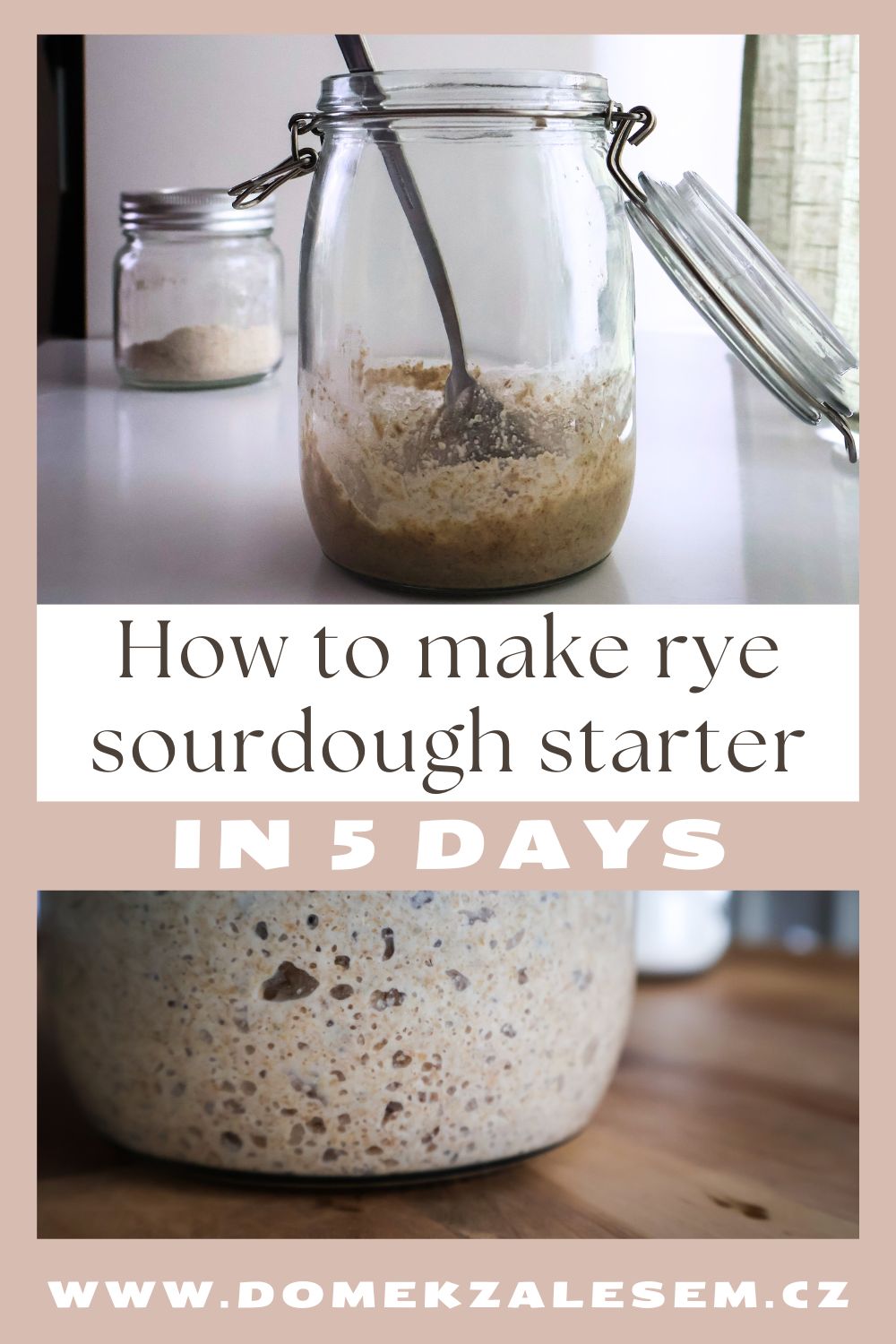
Recipe for about 1 l
How to make a rye sourdough starter
We need:
- wholemeal rye flour (ideally freshly ground)
- water
- a spoon.
- a jar with a lid with a capacity of at least 1.1 l
Instructions:
- Day 1 - Put 1 tbsp of flour (leveled) and 1 tbsp of water (can be from the tap) into a clean jar and stir until thick. A little extra flour or water can be added as needed to give the mixture the right consistency. Cover with a lid but do not seal to allow air to flow to the mixture.
We will continue to feed the sourdough starter at the same time of day - either in the morning, afternoon or evening.
Day 2 - Add 2 tbsp of flour and 2 tbsp of water to the jar, stir and again leave the lid on just enough to allow air to flow to the mixture.
We'll continue to feed our future sourdough starter in the same way, just adding more flour.
- Day 3 - Add 4 tbsp flour and 4 tbsp water.
- Day 4 - Add 8 tbsp flour and 8 tbsp water.
- Day 5 - At this stage, the sourdough starter should be quite active and can be used for leavening bread. For more stability of the starter, I recommend one more addition. So add 16 tbsp of flour and 16 tbsp of water and let it ferment for another 24 hours.
You may also like:
- All Post
- Back
- Breakfast
- Soups
- Breads
- Dessert
- Main dishes
- Others
- Sides

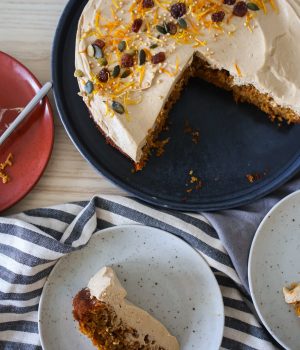
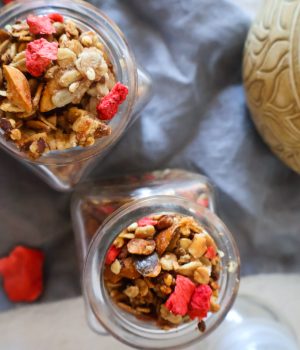
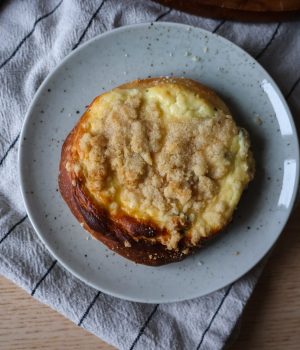
Dobrý den,
chtěla jsem Vám moc poděkovat za skvělý postup na založení kvásku – poprvé se mi povedl.
Děkuji, ať se Vám daří.
Dana Nutilová
Krásný den, moc děkuji za zpětnou vazbu! Jsem moc ráda, že se vám kvásek povedl založit.
Tak jsem založila podle vás žitný kvásek , konečně jsem se k tomu odhodlala a je podle vašeho postupu fákt lehký v sobotu se dám do pečení vašeho žitného chleba , tak si držím palce ,děkuji 👍🍀
Krásný den,
včera jsem začala s kváskem dle Vašeho návodu. Je to můj úplně první pokus o kvásek v životě, tak jsem zvědavá, jak dopadne :-).
Nicméně bych se ráda zeptala – když bych nestihla někdy péct a kvásek uchovávala v lednici a chtěla ho přikrmit, mám přidat mouku a vodu a nechat v teple a pak schovat nebo přikrmit a dát rovnou do lednice? Moc děkuji za radu. Krásný den. Dáša
Dobry den, ulozila jsem si Po 5 dnech 2 PL do sklenicky a dala do lednicky.
Moje otazka, Jak casto Ho mam prikrmovat i kdyz nebudu pect? Musi tedy zustat v lednicce?
Takze na 2 PL lzice vznikleho kvasu Kolik dokrmovani?
Dekuji moc
Jana
Způsob, jakým udržuji kvas se dočtete zde https://domekzalesem.cz/cs_cz/2023/02/27/jak-uchovavat-a-krmit-kvasek/